 |
 |
 |
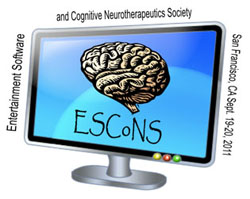 TDLC and ESCoNS TDLC and ESCoNS
TDLC member Beth Rogowsky, a Post Doc at Rutgers University, recently won the People's Choice Award for a poster she presented at the ESCoNS (Entertainment Software and Cognitive Neurotherapeutics Society) conference in September 2011. The study found that 6th grade students, whose standard language arts curriculum was supplemented with CBI training Fast ForWord, showed a statistically significant improvement in their writing skills than the control group who received standard language arts curriculum alone.
Having a background as a middle school teacher for fourteen years, with an MS in Instructional Technology, Beth Rogowsky is thrilled about ESCoNS. The newly formed organization allows researchers like herself, from around the world, to come together to study how the brain changes in response to computerized training. After finding out about the society from Paula Tallal, she remembers thinking, "FINALLY! Gaming, computer-science and education unite!" More |
 TDLC research featured in U.S. News and World Report! TDLC research featured in U.S. News and World Report!
National Science Foundation has provided the content for an article that highlights TDLC research. The article, "How the Brain Learns: Researchers study timing, 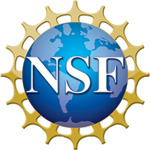 sensory systems, how regions connect," calls attention to the Center's goal of understanding the impact of timing inlearning across brain and social systems. Please click here to read the article. sensory systems, how regions connect," calls attention to the Center's goal of understanding the impact of timing inlearning across brain and social systems. Please click here to read the article.
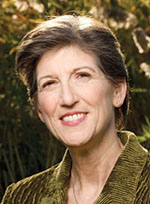  TDLC investigators Paula Tallal and György Buzsaki are both named as members of New Jersey's 20 biggest brains, according to Inside Jersey TDLC investigators Paula Tallal and György Buzsaki are both named as members of New Jersey's 20 biggest brains, according to Inside Jersey
Inside Jersey magazine has come up with a list of "20 exceptional intellects" in New Jersey whose work is "changing the world." TDLC's Paula Tallal is being acknowleged for her help in devising an innovative reading intervention software program called Fast ForWord "to assist children with establishing and strengthening the neural networks necessary for language development." György Buzsaki and his research team are recognized for determining that oscillations are responsible for consolidating memory and storing learned information. His research could "lead to a better understanding of memory deficits and new treatments for memory disorders." In addition, TDLC's partner Center for Molecular and Behavioral Neuroscience, Newark (or CMBN, which is co-founded and directed by Paula Tallal, and in which TDLC investigator April Benasich is also a member) is listed as one of Jersey's "brainiest places."
TDLC's Jim Tanaka was interviewed for CBS radio show "As it happens..." to discuss the Face Maze program
The CBS radio station summarizes: "For most people, smiles are easy to recognize: the lips widen and the corners of our mouth go up. It's a simple gesture that communicates a message without even saying a word. But not everyone can read those messages as clearly. Like those with autism.
Now, a psychologist in BC is hoping to change that. Jim Tanaka is a facial recognition expert at the University of Victoria. He's encouraging people with autism to use a new software program called FaceMaze (to help recognize facial expressions). We reached Mr. Tanaka at his office." (*Note: The interview is 17:00 TO 24:00 into the recording). Click here to listen!
|
|

|
Let's Face It! and CERT help autistic children (2012)
Jim Tanaka and Marni Bartlett

TDLC's Jim Tanaka (University of Victoria) and Marni Bartlett (UC San Diego's Machine Perception Lab) have joined forces to develop a new state-of the-art intervention treatment to help children with autism. More
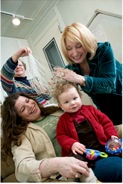 Early Interventions: Baby Brains May Signal Later Language Problem (2011) Early Interventions: Baby Brains May Signal Later Language Problem (2011)
April Benasich
Research by TDLC investigator April Benasich and team suggests that the way infants only a few months old process sound in their brains is highly predictive of later language development in normally developing children as well as children at risk for language disorders.
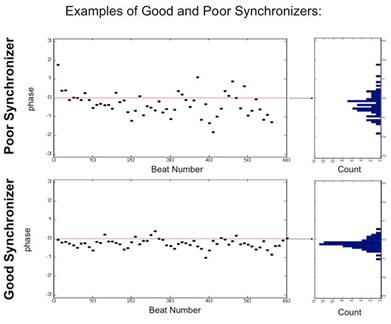 Computer-Based Cognitive and Literacy Skills Training Improves Students' Writing Skills (2011) Computer-Based Cognitive and Literacy Skills Training Improves Students' Writing Skills (2011)
Beth Rogowsky
A study conducted at Rutgers University finds that cognitive and literacy skills training improves college students' basic writing skills. Click here to read more about this and other TDLC 2012-2013 Highlights 
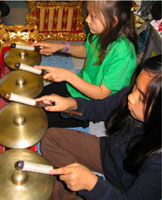 The Gamelan Project: The ability of a child to synchronize correlates with attentional performance (2011) The Gamelan Project: The ability of a child to synchronize correlates with attentional performance (2011)
The gamelan project pilot study demonstrates that the ability of a child to synchronize with an external source in a group setting correlates significantly with established measures of attentional performance.
|
|
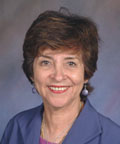 TDLC to celebrate Brain Awareness Week TDLC to celebrate Brain Awareness Week
Brain Awareness Week (BAW) is a "global campaign to increase public awareness about the progress and benefits of brain research." This week-long celebration of the brain occurs every March, and brings together organizations throughout the world. During Brain Awareness Week, partners organize activities to educate people of all ages about the brain and brain research. TDLC will celebrate Brain Awareness Week on March 17, 2012, from 7:30 a.m. to 1 pm at the Supercomputer Center at UC San Diego. TDLC's co-Director Andrea Chiba will give a talk on Motivation, and Tom Fehrenbacher will offer a session on how he has used some of the research on memory in his classroom. |
|
 |
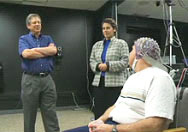 Featured Scientist: Featured Scientist:
Virginia deSa, Ph.D.
Email: desa@ucsd.edu
What is the Brain Computer Interface (BCI), and how are you using it to help Parkinson's Disease patients?
The Brain Computer Interface (BCI) is a technology that links thoughts, commands and emotions from the brain to computers, using EEG. With BCI, a computer reads brain activity and sends signals to an external device like a wheelchair or robot to execute an action. While researchers are using the BCI to create exciting gadgets like mind-dialed cell phones and a cap to alert nodding-off air traffic controllers, the new technology could also have a big effect on medicine.
Three teams of researchers here at UC San Diego -- Scott Makeig and Tzyy-Ping Jung at the Swartz Center for Computational Neuroscience (SCCN), Howard Poizner at the Institute for Neural Computation (INC), and Virginia deSa -- are pioneering this new field. For example, our lab at the Institute for Neural Computation (INC) hopes to use the BCI to better understanding timing and to help Parkinson's Disease patients walk. Parkinson's patients are known to heavily rely on external visual or auditory cues in order to guide their movement. So they may be unable to initiate a movement. But if you put chalk marks down on the floor, they can see where to place their feet and they can begin to move.
We hope to use the BCI to read Parkinson's patients' motor cortex thoughts, about how they want to move and what direction. Using EEG, we want to detect whether they are about to have a gate freezing episode, and then present visual and/or auditory cues that would help them overcome that freezing of gate. The ultimate goal is to develop a portable EEG device that would help prevent their legs from freezing in the first place. Sensors could be embedded in a baseball cap or a headband, and virtual reality glasses would display visual images to guide the patient. Emerging technology could help retrain the brain.
We're not reading people's thoughts as they're thinking about Shakespeare's lines. That's a long way off. But reading their motor cortex thoughts, about how they want to move and what direction, that's very doable. |
|
This message was sent from:
The Temporal Dynamics of Learning Center (TDLC.UCSD.EDU)
University of California, San Diego,
9500 Gilman Drive, La Jolla, CA 92093
To learn more about TDLC, please visit us on the web at: TDLC.UCSD.EDU
Please contact webmaster@tdlc.ucsd.edu to unsubscribe.
TDLC is a Science of Learning Center (SLC),
one of six SLCs funded by the National Science Foundation. NSF grant #SBE-0542013
|
|
 |
 |
 March 2012 March 2012
|
|

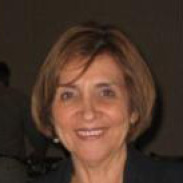
TDLC's The Educator Network
Recent
Forum Topic:
Computer gamers' brains 'differ'
In a study reported in Transitional Psychiatry researchers found that the brains of teenagers who play computer games on a regular basis were different from those teens who played infrequently. Researchers admit that more study needs to monitor brain structure over time.
Article
|
|
|
 |
 |
Training the Brain: Practical Applications of Neural Plasticity From the Intersection of Cognitive Neuroscience, Developmental Psychology, and Prevention Science
(American Psychologist,
Feb/Mar 2012).
Read More
|
 |
The Upside of Dyslexia (The New York Times, Feb. 4, 2012)
"The latest findings on dyslexia are leading to a new way of looking at the condition:
not just as an impediment, but as an advantage, especially in certain artistic and scientific fields..."
Read More
|
 |
Why Do Cells Age? Discovery of Extremely Long-Lived Proteins May Provide Insight Into Cell Aging and Neurodegenerative Diseases (ScienceDaily,
Feb. 3, 2012)
"One of the big mysteries in biology is why cells age. Now scientists at the Salk Institute for Biological Studies report that they have discovered a weakness in a component of brain cells that may explain how the aging process occurs in the brain."
Read more
|
 |
Scientific visions that take the prize
Top entries in the International Science and Engineering Visualisation Challenge, sponsored by the journal Science and the National Science Foundation
Read more
|
 |
Words from brain waves may let scientists read your mind (MSNBC Vitals)
Scientists have found a way to decipher actual words from a person's brain waves, a new study shows.
|
 |
Paralyzed man uses brain-powered robot arm to touch
(MSNBC
Men's Health)
Read more
|
 |
Placebos and Distraction: New Study Shows How to Boost the Power of Pain Relief, Without Drugs
"Placebos reduce pain by creating an expectation of relief. Distraction -- say, doing a puzzle -- relieves it by keeping the brain busy. But do they use the same brain processes? Neuromaging suggests they do."
(ScienceDaily, Feb. 3, 2012)
Read more
|
 |
Have We Met? Tracing Face Blindness to Its Roots (The New York Times, Health section)
Prosopagnosia, also known as face blindness, is a neurological mystery, but new research has shed light on this unusual malady.
Read More
|

|
Brain Activity During Sleep
"Although sleep appears to be a passive and restful time, it
actually involves a highly active and well-scripted interplay of brain
circuits to produce its various stages." These stages -- slow wave sleep and REM sleep -- were discovered in the 1950s using the EEG to examine human brain waves during sleep.
(reference: Society for Neuroscience - Brain Facts: A Primer on the Brain and Nervous System). |
|
|
 |

![]()
